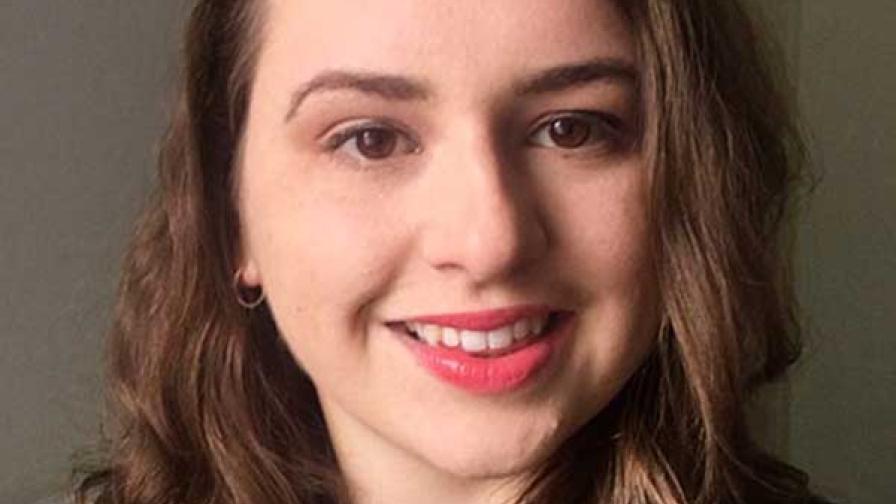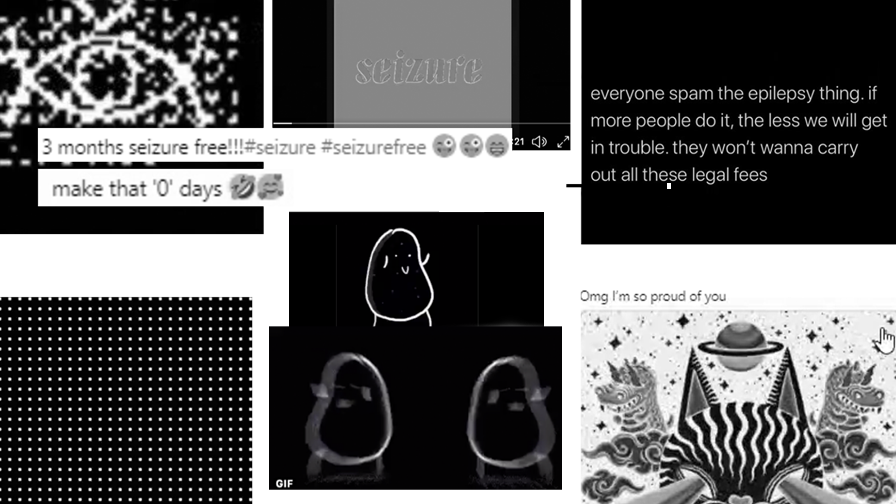Photosensitive epilepsy
Photosensitive epilepsy is when seizures are triggered by flashing lights or contrasting light and dark patterns. Photosensitive epilepsy is not common but it may be diagnosed when you have an EEG test. Flashing or patterned effects can make people with or without epilepsy feel disorientated, uncomfortable or unwell. This does not necessarily mean they have photosensitive epilepsy.
How common is photosensitive epilepsy (PSE) ?
Around 1 in 100 people has epilepsy and, of these people, around 3% have photosensitive epilepsy. This is when seizures are triggered by certain rates of flashing lights or contrasting light and dark patterns. Most people who develop photosensitive epilepsy are between the age of 7 and 19 years old. A small number of people who develop epilepsy as adults also have PSE. Women are more likely to have PSE than men.
You are more likely to have PSE if someone has it in your family. If someone in your family has juvenile myoclonic epilepsy, you are at higher risk of having PSE.
There are many types of epilepsy and PSE is most common in the following types:
- Childhood absence epilepsy;
- Dravet syndrome;
- Juvenile absence epilepsy;
- Juvenile myoclonic epilepsy;
- Lennox Gastaut syndrome; and
- West syndrome.
What is photosensitive epilepsy?
This is when you have a seizure straightaway, caused by being exposed to flashing or flickering lights or high contrasting patterns. Most people who have PSE also have epileptic seizures at other times. But some people only have seizures that are triggered by flashing or flickering lights or high contrasting patterns. Seizures are most commonly tonic-clonic seizures but they can be any type of seizure.
Which tests can show if you have photosensitive epilepsy?
An electroencephalogram EEG can help with diagnosis, and may include testing for photosensitive epilepsy. This usually involves looking at a light which will flash at different speeds, but other triggers can be tested for in specialist centres. If this causes any changes in brain activity, the physiologist will stop the flashing light before a seizure develops.
What rate of flashing light can trigger seizures?
Between 3-30 hertz (flashes per second) are the common rates to trigger seizures but this varies from person to person. While some people are sensitive at frequencies up to 60 hertz, sensitivity under 3 hertz is not common.
What patterns can trigger seizures?
Some people are sensitive to geometric patterns with contrasts of light and dark such as stripes or bars. Patterns are more likely to be a trigger if they are changing direction or flashing, rather than if they are still, or moving slowly in one direction.
Flashing, flickering or patterned effects can make people with or without epilepsy feel disorientated, uncomfortable or unwell. This does not necessarily mean they have photosensitive epilepsy.
How is photosensitive epilepsy treated?
The most common way to treat photosensitive epilepsy is with anti-seizure medication (ASM) This is to lower the risk of having a seizure.
You can also reduce the risk of having a seizure caused by flashing or flickering lights and high contrasting patterns by avoiding photosensitive triggers. This can work well for those who only have PSE and who do not have other seizures.
To reduce the risk of having seizures even more, try to avoid, where possible, common seizure triggers, particularly if you know these are triggers which affect you.
What is unlikely to be a photosensitive trigger?
Triggers are individual, but the following sources are not generally likely to trigger photosensitive seizures.
- UK TV programme content - Ofcom regulates material shown on TV in the UK. The regulations restrict the flash rate to three per second or less, and they also restrict the area of screen allowed for flashing lights or alternating patterns.
- Digital TV and plasma screens - adjusting the brightness down on some screens can be helpful if you have photosensitive epilepsy.
- Modern computer or TV screens, mobile phones and tablets do not flicker, and are unlikely to be a trigger themselves, but if there are flashing or flickering images, or particular patterns on the screen, this could trigger a seizure. Flatscreen monitors, such as laptops, have a liquid crystal display (LCD) that does not flicker, so are even less likely to trigger seizures.
- Cinema and hand-held screens. Due to the size of the screen and the low intensity of the projection, it is rare for seizures to be triggered by films in a cinema, or by hand-held miniature screens.
- 3D cinema films - images are projected separately at each eye, reducing the already low intensity of the projection even further, and so the risk of a 3D film triggering a seizure is about the same as a normal cinema film.
- Interactive whiteboards are unlikely to trigger a seizure, unless another flickering light source in the room reflects onto the whiteboard.
- Cycle lights are unlikely to trigger a seizure, as they are covered by UK law which states that they must not flash at less than one or more than 4 flashes per second. If the lights comply with the law, they should not cause a problem.
What may be a photosensitive trigger?
These can vary from person to person but can include:
- Flashing or flickering lights or images between 3 and 60 hertz (flashes per second). Lights that flash or flicker between 16 and 25 times a second are the most likely to trigger seizures.
- Light bulbs should not trigger seizures unless they are faulty, flickering, or flashing when they are not designed to, or the wrong type of bulb is used. For example, if the wrong bulb is used with a dimmer switch, this could cause a flickering effect.
- Christmas lights and strobe lights are not covered by UK law. This means that it could be possible that the rate at which they flash could trigger a seizure for some people.
- Images on screens with a contrasting dark and light geometric pattern, such as black and white stripes or checks, or bright, high contrast colours, can be a trigger for some people.
- Virtual reality. This is an experience created by a computer that stimulates more senses than just vision. Images generally flash too quickly to trigger a seizure in people with photosensitive epilepsy. However, the field of view is large and so more of the brain may be affected and this may trigger a seizure.
Factors that may increase the photosensitive risk
- Tiredness, stress or excitement. For example, playing a video game for a long time without breaks.
- The effect taking up all your field of vision. For example, being very close to a screen.
- A light and dark pattern moving quickly, or changing direction, creating a disorientating effect.
- Seeing the effect against a dark background, such as watching a screen in a darkened room.
What to do if suddenly exposed to a trigger
- Covering one eye completely with your hand can reduce the photosensitive effect.
- Turn away from the possible trigger.
- Don't close your eyes as this might cause a flicker effect.
Other photosensitive triggers
TV and computer screens that flicker
- Faulty TVs or other screens that flicker.
- A flashing image on a computer screen or game.
Patterns in the natural environment
- Sunlight through trees, blinds, or on water or snow.
- Railings, escalators, or other structures creating repetitive patterns as you move past them, for example, through a car window.
- Rotating wind turbine blades, if certain weather conditions occur together with other specific factors, particularly for smaller blades that rotate faster. Large wind turbines have blades which rotate at a rate that is unlikely to trigger seizures.
Online content and social media
- Content shared online or on social media could trigger seizures if it contains flashing imagery or animated patterns. This could be in GIFs, videos, or animated backgrounds used in video conferencing systems like Zoom and Microsoft Teams. On many online and social media platforms it is possible to turn off the autoplay feature for videos and GIFs. See epilepsy and staying safe online.
Flashing or flickering lights or images
- Cameras with multiple flashes or many cameras flashing at once. Single or double flashes are not likely to pose a risk.
- Strobe lights at performances or in nightclubs.
- Lights flickering, such as faulty fluorescent tubes.
- Fireworks, if they create a high enough flash rate.
- Flashing bicycle lights or other LED lights against a dark background, and the effect fills your vision.
- Several circuits of festive lights flashing together could increase the flash rate.
Reducing the risk of a photosensitive trigger
The environment and how you use a screen
- Use a flatscreen with a high refresh rate. Plasma, LCD, or TFT screens with a refresh rate of 100 hertz are less likely to trigger a seizure than older TVs and computer monitors.
- Take regular breaks from the screen.
- Sit well back from the screen.
- Use a remote control to change channels.
- Watch TV or use a screen in a well-lit room.
- Use the settings in internet options to control moving images in your browser.
Special glasses do not stop photosensitivity in a person, but they may help to reduce the effect.
- An optometrist can prescribe coloured or photochromic glasses (darkened lenses) to reduce light sensitivity or visual distortions. The choice of colour of the lenses can, in special circumstances, be tailored to the individual.
- Polarising sunglasses reduce reflection and glare such as sunlight on water.
UK regulations
- Ofcom regulations require that TV programmes and news stories have a warning if there is going to be a high level of flashes in the programme.
- The Health and Safety Executive recommends that strobe lighting, in clubs or at public performances, flashes at a maximum rate of four Hertz (flashes per second) or less.
If you have a product that you are concerned may trigger photosensitive seizures, Cambridge Research Systems Ltd offer the HardingFPA, which is a suite of applications for compliance with international guidelines on Flashing and Spatial Patterns in Broadcast Video, including Ofcom, ITU, NAB-J and ISO.
Epilepsy Society is grateful to Dr F J Rugg-Gunn, Consultant Neurologist and Honorary Associate Professor, Clinical Lead, Chalfont Centre for Epilepsy, who reviewed this information
Information produced: April 2025. Review date: April 2027.
Download this information
For a printed copy contact our Helpline.

Sophie's Story
Sophie Harries, 22, is a dietitian from Somerset. She was diagnosed with photosensitive epilepsy at the age of 15. She explains how it affects her life.
"When I was first diagnosed with photosensitive epilepsy, social media wasn't as big as it is now, so it wasn't such a problem for me. Once I went to uni I had to be careful to avoid strobe lighting so couldn't go out clubbing with my friends.
"That is still the case, but now I have to be careful of any videos uploaded to social media that contain strobe lighting or flashing imagery. The videos tend to play automatically putting me at risk of a seizure. If my friends have been out clubbing I have to avoid social media for a while.
"But so much of the shared content can cause a problem. There was a recent trailer for a film which contained flashing lights. I reported it to Instagram but they just said it wasn't breaching their current terms of usage.
"You can un-follow posts but they still tend to follow you around. For a 15 year old today it is an absolute minefield. Young people are permanently on social media with friendship groups. It is their way of finding out who they are. If I was 15 years old today and just diagnosed with photosensitive epilepsy, I would have to avoid social media altogether or risk lots of seizures."

Safeguarding people from online harms
#ZachsLaw
In September 2023, the Online Safety Bill, including Zach's Law, was passed. This is a huge win for all of us at the Epilepsy Society, and especially for Zach.


Epilepsy and staying safe online
As social media continues to play an increasingly large role in modern life, this can bring with it extra challenges for people with epilepsy, especially for those who have photosensitive epilepsy. Here are some simple steps you can take to make using social media a safer experience.